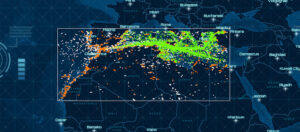military combatant commands since September from its constellation of three satellites flying in formation in low Earth orbit to geolocate RF sources.
“This pilot program is placing our RF signal data and analytics into the hands of end users, so they can leverage this powerful resource to fulfill mission needs,” HawkEye 360 CEO John Serafini said in a statement. “Commercial RF GEOINT complements traditional government systems by offering analysts a readily accessible layer of RF knowledge. The large regions we cover, the range of signals we collect and the accuracy of our results all contribute to forming a richer analysis.”
Hawkeye 360 launched its first three satellites in December 2018. The Herndon, Virginia-based company is preparing to launch its second three-satellite cluster in January.
Thanks to strong investor backing, Hawkeye 360 has funding to build and launch five additional satellite clusters in 2021 and 2022.
Under the RF GEOINT pilot, intelligence analysts are examining the utility of Hawkeye 360 satellites to perform various roles including tipping and cueing other sensors. If Hawkeye 360 detects a ship that has turned off its Automatic Identification System transponder, for example, could analysts obtain information from electro-optical or radar satellites to reveal whether any illegal activity is occurring?
“United States combatant commands are also using the data to improve maritime awareness and cooperation with regional allies through unclassified sharable data and analytics,” according to the Hawkeye 360 news release.
In December 2019, the National Reconnaissance Office announced the award of a data integration study contract to HawkEye 360.
NGA is obtaining Hawkeye 360 data through the NRO study contract. The data are then integrated into NGA’s Predictive GEOINT Prototype, “which supports an agile development approach for exploring new commercial sources and analytics,” according to the news release.



